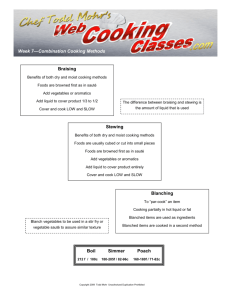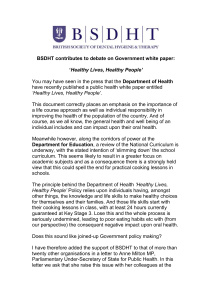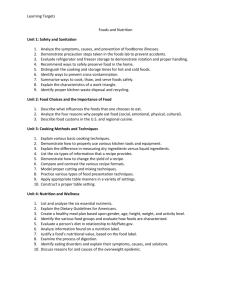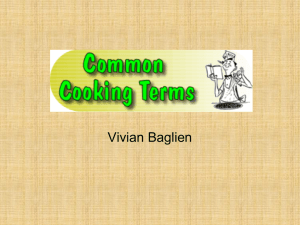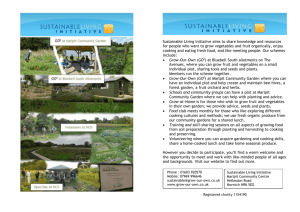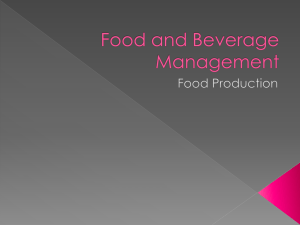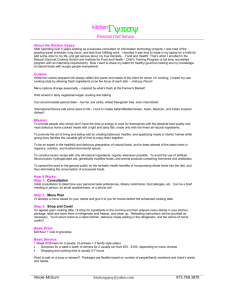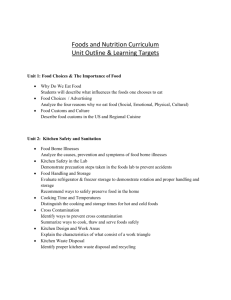Food Preparation Techniques and Nutrient Absorption
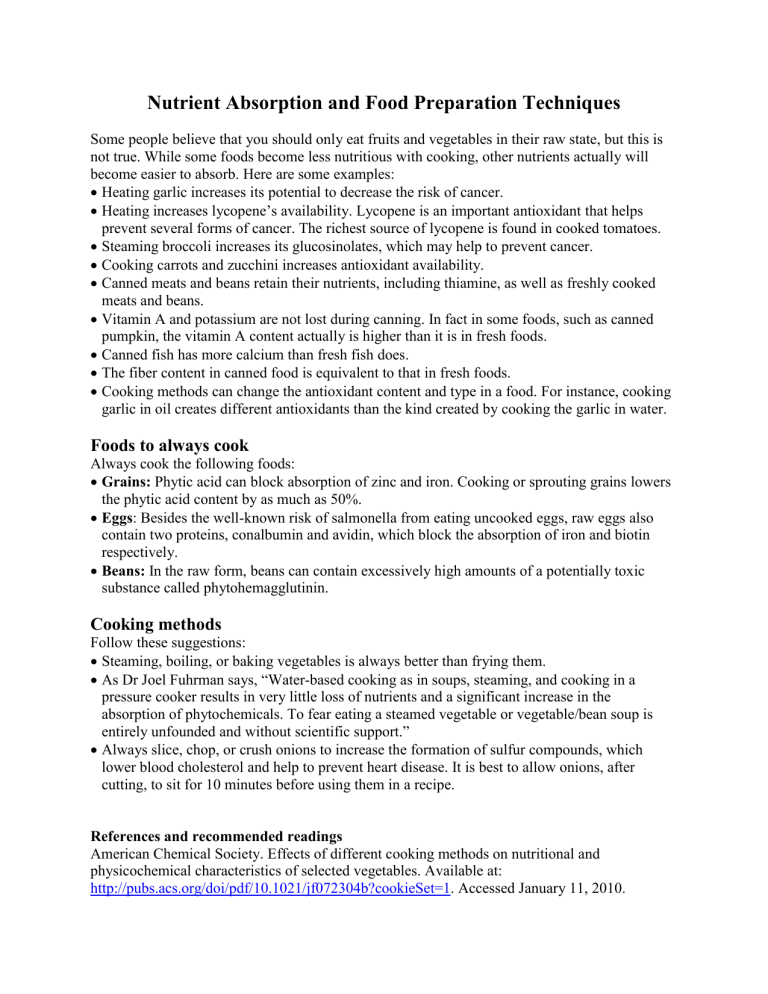
Nutrient Absorption and Food Preparation Techniques
Some people believe that you should only eat fruits and vegetables in their raw state, but this is not true. While some foods become less nutritious with cooking, other nutrients actually will become easier to absorb. Here are some examples:
Heating garlic increases its potential to decrease the risk of cancer.
Heating increases lycopene’s availability. Lycopene is an important antioxidant that helps prevent several forms of cancer. The richest source of lycopene is found in cooked tomatoes.
Steaming broccoli increases its glucosinolates, which may help to prevent cancer.
Cooking carrots and zucchini increases antioxidant availability.
Canned meats and beans retain their nutrients, including thiamine, as well as freshly cooked meats and beans.
Vitamin A and potassium are not lost during canning. In fact in some foods, such as canned pumpkin, the vitamin A content actually is higher than it is in fresh foods.
Canned fish has more calcium than fresh fish does.
The fiber content in canned food is equivalent to that in fresh foods.
Cooking methods can change the antioxidant content and type in a food. For instance, cooking garlic in oil creates different antioxidants than the kind created by cooking the garlic in water.
Foods to always cook
Always cook the following foods:
Grains: Phytic acid can block absorption of zinc and iron. Cooking or sprouting grains lowers the phytic acid content by as much as 50%.
Eggs : Besides the well-known risk of salmonella from eating uncooked eggs, raw eggs also contain two proteins, conalbumin and avidin, which block the absorption of iron and biotin respectively.
Beans: In the raw form, beans can contain excessively high amounts of a potentially toxic substance called phytohemagglutinin.
Cooking methods
Follow these suggestions:
Steaming, boiling, or baking vegetables is always better than frying them.
As Dr Joel Fuhrman says, “Water-based cooking as in soups, steaming, and cooking in a pressure cooker results in very little loss of nutrients and a significant increase in the absorption of phytochemicals. To fear eating a steamed vegetable or vegetable/bean soup is entirely unfounded and without scientific support.”
Always slice, chop, or crush onions to increase the formation of sulfur compounds, which lower blood cholesterol and help to prevent heart disease. It is best to allow onions, after cutting, to sit for 10 minutes before using them in a recipe.
References and recommended readings
American Chemical Society. Effects of different cooking methods on nutritional and physicochemical characteristics of selected vegetables. Available at: http://pubs.acs.org/doi/pdf/10.1021/jf072304b?cookieSet=1 . Accessed January 11, 2010.
Grogan BC. Should I be a “raw food vegan”? Available at: http://www.bryannaclarkgrogan.com/page/page/4045016.htm
. Accessed January 11, 2010.
University of Illinois at Urbana-Champaign, Dept of Food Science and Human Nutrition. Study findings: comparison of selected fresh, canned, and frozen fruits, vegetables, legumes and protein foods. Available at: http://nutrican.fshn.uiuc.edu/findings.html
. Accessed January 11,
2010.
Review Date 2/10
G-1250
